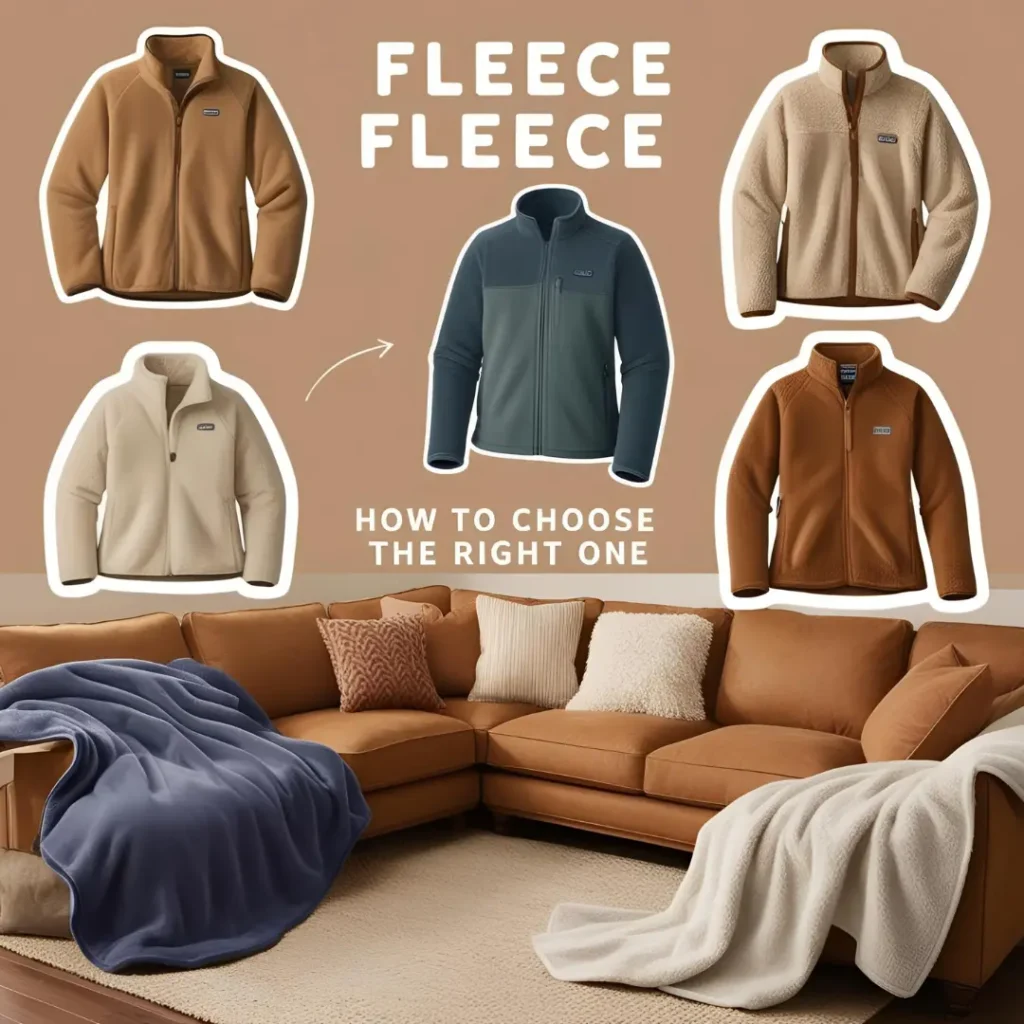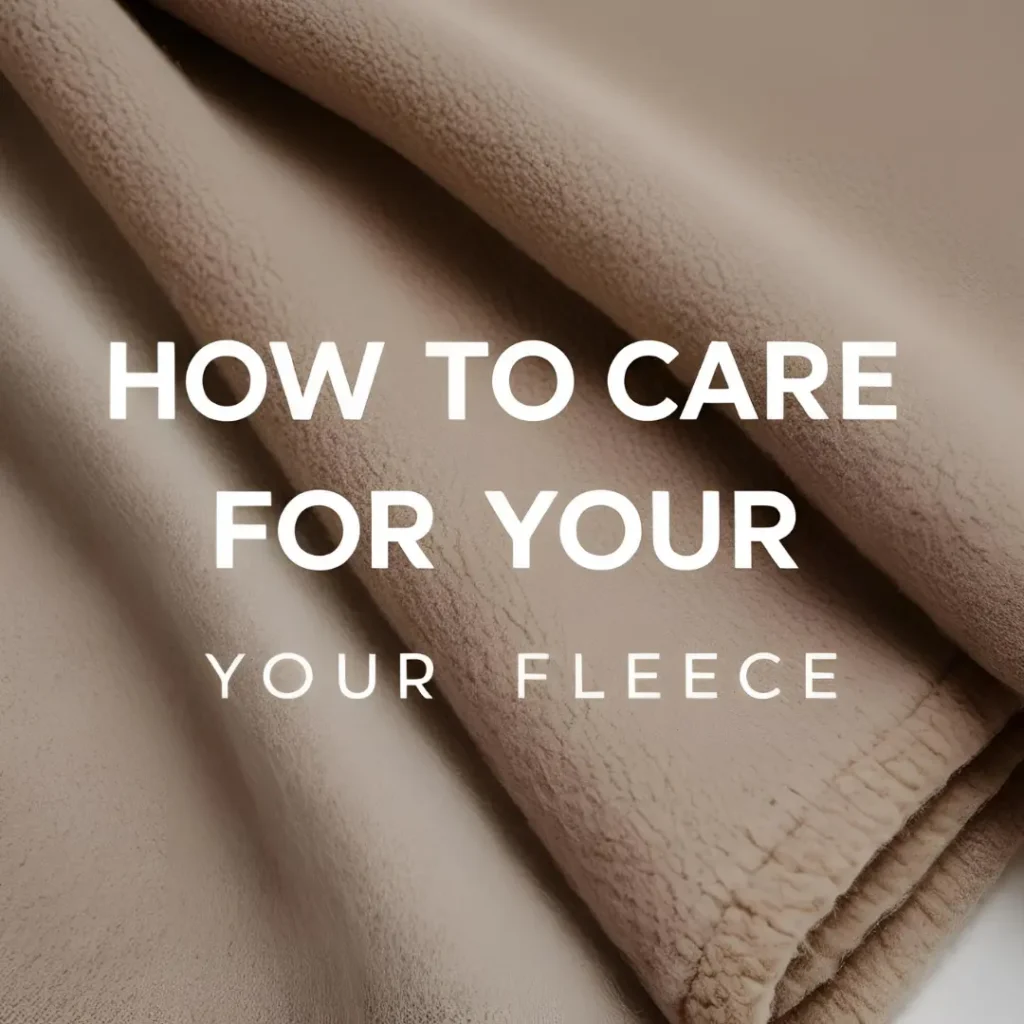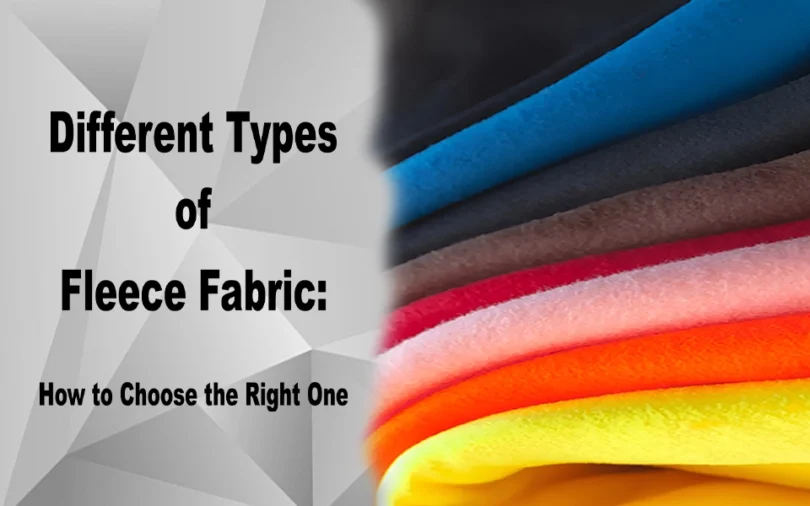We love to shop for clothes for different occasions and seasons, but we never bother ourselves enough to realize that the jacket or coat we are wearing has undergone hundreds of procedures before reaching us in its final form.
For some reason, we’ve all just kind of accepted that the background of a fabric is something only a factory worker or craftsman should care about — which is completely absurd.” This is one of the crucial things to know before paying three times extra for something worth $2 just because it has a so-called label attached to it.
Today, in this easy guide, we will let you know about different types of Fleece, the widely used fabric to make hoodies, sweatshirts, sweaters, jackets, and cardigans. Due to its several types, not only do we, as common buyers, get confused, but sometimes people related to the field can get a fit of anxiety, especially beginners.
Now that we have compiled facts and figures to understand the types of Fleece in this article, you will be able to choose the right one next time you stop by a branded outlet.
History of Fleece:
Fleece fabric traces its origins back to the late 1970s and early 1980s, with initial developments conducted by Malden Mills in Massachusetts, USA. The company was searching for a wool alternative that would keep one warm while being lightweight, not itchy, and not too expensive. Their ingenious modern method was to manufacture a flat polyester fiber product: polyethylene terephthalate (PET) fleece fabric.
What made fleece groundbreaking was that it could be made from recycled plastic bottles, turning waste into wearable, functional clothing. This eco-conscious move earned Fleece a solid reputation not just for performance but for sustainability.
The first fleece fabric was born under the trademark Polarfleece, which revolutionized the outdoor and sportswear scene. Among those who helped popularize Fleece during its fledging years was Patagonia, one of the earliest outdoor clothing companies to adopt Fleece.
Since then, Fleece has defined many types that are used to make blankets, loungewear, or linings these days. It is famous for being soft, being an insulator, and wicking.
What is Fleece?
Fleece is a warm, soft synthetic fiber that has all the properties for insulation. Its unlike wool, it’s not bulky but a lightweight fabric. The core nature of Fleece is comfort, which is achieved by locking the warm temperature in the cold weather without letting go of breathability. Fleece is widely used in the making of outerwear and layering pieces.

However, all of these clothing items look and feel distinctive. Even though the fabric is the same. It’s because fleece fabric comes in various types. Likewise:
- Cotton Fleece
- Polyester Fleece
- Microfleece
- Polar Fleece
- Sherpa fleece
- Slub fleece
- French terry Fleece
- Lycra Spandex Fleece
What differentiates each of these types is the technique used to make all of them. First off, let’s start with how Fleece is made and then we will find out what proportions of different fabrics are used to make its types, along with the procedures of making them
.
How is Fleece made?
The 1980s have introduced us to the concept of lightweight clothing in the cold without constricting and it’s made possible with the Fleece that is completely made with the recycled yarn from trash to textile. Such as natural fibers like cotton or plastic bottles. The fibers are first spun into yarn, which is later knitted into fabric.
Then comes the process of napping (brushing) after the fabric is prepared. This step gives Fleece a fluffy texture. The gentle brushing with the help of big machines raises the fibers from its surface to make it fuzzy warm and smooth. Besides, it needs trimming sometimes just to make the fabric feel smoother and more even. (this is the form we all love.)
The third step is dyeing this softest form of texture just to make it durable and water-resistant, depending on what it’s going to be used for. The last step is to test the fleece fabrics against techniques such as soaking them in the water; if water passes through, it means the fabric has failed, and then the superintendent checks it himself for any major production faults, but these are just two tests we mentioned, but Fleece is checked multiple times before sending it into the clothes factories.
Once finished, the fleece fabric is ready to be cut and sewn into jackets, sweatshirts, blankets, or anything cozy. Now we know how a simple form of Fleece is made. Let’s find out about its other types.
Cotton fleece:
Cotton fleece is a fiber obtained from cotton plants, which are harvested, the cotton bolls are separated, and the fibers are cleaned of dirt and impurities. The clean fibers of cotton are spun into yarn on a spinning machine, which, in turn, is formed into fabric using circular knitting. Post fabric formation, a brushing process with special rollers occurs to lift the fibers on the inside and give it that gorgeous soft, fuzzy feel, while the outside remains smooth for a clean finish. Finally, the fabric is dyed, softened, and sometimes pre-shrunk to prevent shrinkage after home washing.
Polyester fleece.
It is made from synthetic fibers, generally recycled from PET plastic bottles. The recycled plastic gets melted and then extruded through spinnerets, from which fine fibers are obtained, cooled, and spun into yarn. The yarn is then knitted into large sheets of fabric. Both sides of the fabric are brushed using wire rollers to raise the surface fibers, creating a plush feel. The texture set into the fabric with heat is dyed in various colors and treated with pill-resistant or water-repellent finishes when necessary.
Microfleece
Microfleece, of course, is manufactured very much like polyester fleece but from synthetic fibers that are ultra-fine, thin, and lightweight. The very fine fibers are spun into typically very soft yarn, which is knitted into closed fabric. The light brushing on both sides preserves the softness while minimizing bulk. The tightly woven, minimally fleeced microfleece is ideal for layering and breathability. The smooth and insulating final fabric has a comfortable feel on the skin.
Polar Fleece
The polar Fleece is made of the heavier polyester yarns to provide warmth. After knitting, the fabric is severely brushed on both sides, raising a thick layer of fibers that trap heat effectively. The process also enhances the softness of the fabric as well as thermal insulation. The fabric is sheared to a standard height to minimize pilling. Anti-pill coatings may be applied, and it is also sometimes treated for moisture or wind resistance, making it suitable for winter outerwear.
Sherpa Fleece
Sherpa fleece is made up of a variation that is close to sheep’s wool in both feel and appearance. It is made up of polyester, which is whirled into yarn and then woven into fabric according to the looped technique. This fabric is then extensively brushed to lift and tangle the loops into a deep and fluffy pile that resembles wool. The fibers are sheared and shaped to give it that cozy, uniform, woolly look. Sherpa fleece is generally used as a lining in jackets or blankets for added insulation and coziness.
Slub Fleece
Slub fleece is made using slub yarn, which is intentionally spun with thick and thin sections. These uneven yarns are knit into fabric to create a subtle, textured appearance. A gentle brushing technique is used so that this type allows for intact, irregular texture. This softly brushed-off fabric is dyed to subtly add to the unique, worn-out feel. The end result is a textured and cozy material with a well-lived, wonderfully used look that is quite prevalent in ready-to-wear.
French Terry Fleece
French Terry is a unique knit fabric that features loops on one side while the other side is smooth. It is made by taking cotton or a cotton blend, spinning it into yarn, and then knitting it under a terry pattern. Unlike many typical fleeces, French Terry is not brushed but instead leaves the loops doing their job, providing ventilation and soaking moisture. It is then dyed and softened using softeners in order to be very gentle and light enough for casual loungewear and activewear in mild environments.
Lycra or Spandex Fleece
Lycra/spandex blends elastic fibers into cotton or polyester yarns. A very small quantity of spandex fiber is worked into the primary spinning fiber. From there, stretchy yarn is knitted to fleece fabric; it is lightly brushed to maintain the stretch yet provides soft ease. The final fabric is dyed and finished using treatments to resist spoilage and still retain stretching qualities for long-term use. This makes it particularly advisable for yoga wear, workout wear, or fitted wear.

How to choose the right Fleece?
When the winter chill crawls in, we all reach out for one fabric fleece. This fabric is soft and warm, cozy, and highly versatile. But all Fleece is not made equal. The kind of Fleece you will be selecting will depend largely on where, when, and how you are planning to wear it. Whether you are warming up for an activity on the snowy hills, trying to layer up for that early morning run in cool weather, or just preparing to hang around at home, the right type of Fleece could make a difference between comfort and discomfort.
The guide is intended to be practical and no-fluff for directing you toward the right Fleece based on specific needs and the common mistakes to avoid.
What’s the Fleece for?
Before delving into fabric types or attributes, you have to question the very first essential thing:
What am I going to use this Fleece for?
For general casual wear?
Go for lightweight or midweight fleece fabrics that are soft, breathable, and easy to throw on. Options include microfleece or French terry.
For outdoor adventures in cold weather?
Consider heavyweight or polar Fleece that keeps you warm and dry with moisture-wicking properties. If it’s possible there will be wind or rain, layer under a hard shell
For activewear or gym workouts?
Choices vary from Lycra-blend to microfleece fabrics for stretch, breathability, and comfort during movement.
For fashion-conscious layering?
Sherpa fleece or slub fleece gives texture/warmth with a stylish take on wool warmth.
The clearer you are about the purpose, the easier it is to make a decision because there is no one fleece that could perfectly do it all.
Understand the type
Taking notes on each type of Fleece and what they are best at.
Cotton Fleece
This is a natural material that breathes and is eco-friendly. Good for everyday wear but not very good for the wet and cold outdoors since it absorbs moisture.
Polyester Fleece
Synthetic, warm, and moisture-resistant. It is the choice fabric for outdoor and athletic wear. Beware of static buildup and possible pilling if untreated!
Microfleece
Very thin and breathable for layering. Great for active use without overheating.
Polar Fleece
Thick and insulated. Mostly used for jackets and cold-weather gear. Choose anti-pilling for durability.
Sherpa Fleece
Textured and super-soft for lining or fashion pieces. They are wonderfully warm but not suitable for high-energy activities.
French Terry
One smooth side, one looped side. Middleweight: good for casual layering in mild weather.
Lycra Spandex Fleece
The blended stretch fibers allow for full movement. Perfect for yoga, running, or any other activewear considerations.
Common problems to avoid:
Please avoid these mistakes commonly encountered while choosing the Fleece. Even if you are purchasing it from a well-known brand.
Pilling: This is something that happens with low-grade Fleece within a few washes. Look for the anti-pill Fleece or check the reviews.
Static cling: This happens mostly with synthetic fleeces. Try anti-static sprays and wash with fabric softeners.
Might be too hot or maybe too cold: Misjudging weight is common. If unsure, just go midweight; it is the most versatile.
Poor layering: If you’re going to wear Fleece under jackets, forget about heavy sherpa and oversized cuts.

How to care for your Fleece?
Because of its warmth and comfort, Fleece is the preferred fabric. However, as you may have heard, the better you take care of it, the longer it will last. Here are five important steps to follow
Washing Your Fleece
Before tossing your Fleece into the wash, it’s best to flip it inside out. This small step helps reduce surface fuzz and keeps it looking neat. Stick to cold water and a gentle cycle—heat and rough motion can mess with the texture and cause shrinking or pilling. Keep your detergent simple, and skip the fabric softener. Softener might sound like a good idea, but it actually coats the fibers and makes them less breathable and less warm.
Drying Your Fleece
Air drying is your Fleece’s best friend. Spread it out flat on a clean surface and let it dry naturally. If you’re in a rush and need the dryer, choose a no-heat or low-heat setting. High temperatures are a quick way to ruin the softness and can even melt synthetic Fleece. When it’s dry, take it out right away to avoid wrinkles and static cling.
Avoid Ironing
Fleece and hot irons are not a good match. The heat can melt the fibers and leave behind a shiny, damaged spot. If your Fleece is a little wrinkled, try steaming it instead. Hanging it in the bathroom while you shower can work wonders, too—no direct heat, but plenty of wrinkle release.
Storage Tips
Clean your Fleece before storing it, especially if it’s going away for a season. Smut and oils can set into the material and even attract pests. Keep it in a cool, dry space, out of direct sunlight. Hanging it is fine, but folding works, too—as long as it’s not crammed into a tight space where it might lose shape.
How to Prevent Pilling
Pilling happens when the fabric rubs against itself or rough surfaces. It’s better to wash your Fleece with other soft fabrics rather than use a washing machine. If you go crazy and overload it, you may notice some pilling. Don’t worry because you can fix that with either a fabric shaver or just some lint rolling; it will flatten things out without causing damage to the fabric.
The Final Thread:
In this article, you have read how Fleece is made and treated and also the procedure for making its types. Secondly, the nature of different types and which one works best for your lifestyle choices. Now that you have grasped the notion behind them, it will definitely help you choose the right Fleece fit next time.
We want you to shop smartly and get the right Fleece based on your day-to-day use without paying hefty amounts for cheaper quality. At LJB we follow eco-friendly methods to provide you with the best quality possible. So if you are up to purchasing some fleece, better check out our fleece collections.







